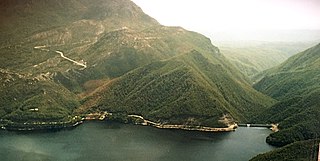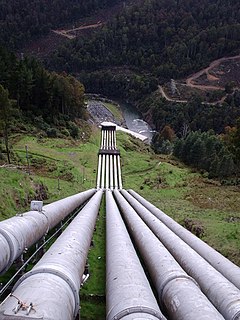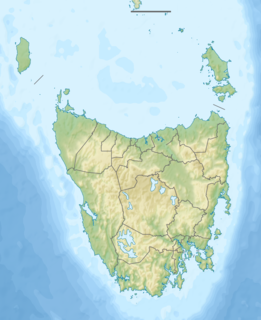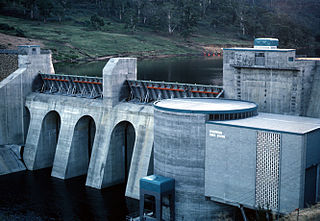| Clyde | |
|---|---|
 | |
| Location | |
| Country | Australia |
| State | Tasmania |
| Region | Midlands |
| Settlements | Bothwell, Hamilton |
| Physical characteristics | |
| Source | Lake Sorrell and Lake Crescent |
| ⁃ location | near Interlaken |
| ⁃ coordinates | 42°56′S146°7′E / 42.933°S 146.117°E |
| ⁃ elevation | 817 m (2,680 ft) |
| Mouth | River Derwent |
⁃ location | south of Hamilton |
⁃ coordinates | 42°34′47″S146°48′39″E / 42.57972°S 146.81083°E Coordinates: 42°34′47″S146°48′39″E / 42.57972°S 146.81083°E |
⁃ elevation | 73 m (240 ft) |
| Length | 97 km (60 mi) |
| Basin size | 1,120 km2 (430 sq mi) |
| Basin features | |
| River system | River Derwent catchment |
| Reservoirs | Lake Sorell, Lake Crescent, Meadowbank Lake |
| [1] | |
The Clyde River, also known as the River Clyde, [1] part of the River Derwent catchment, is a perennial river located in the Midlands region of Tasmania, Australia.

The River Derwent is a river located in Tasmania, Australia. It is also known by the palawa kani name timtumili minanya. The river rises in the state's Central Highlands at Lake St Clair, and descends more than 700 metres (2,300 ft) over a distance of more than 200 kilometres (120 mi), flowing through Hobart, the state's capital city, before emptying into Storm Bay and flowing into the Tasman Sea. The banks of the Derwent were once covered by forests and occupied by Tasmanian Aborigines. European settlers farmed the area and during the 20th century many dams were built on its tributaries for the generation of hydro-electricity.
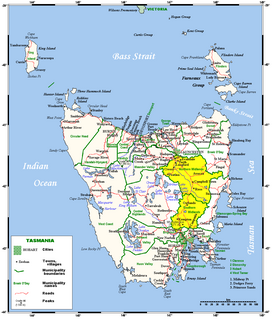
The Midlands is a region of Tasmania between Launceston and Hobart. It also refers to the relatively flat, dry agricultural area, so named because it covers the region between the two cities. Its name is probably also influenced from the Midlands in the United Kingdom. It lends its name to the Southern Midlands Council, Northern Midlands Council, and the Midland Highway. The region is sometimes conflated or confused with the adjacent region of the Central Highlands—with the added term Tasmania's heartland.

Tasmania is an island state of Australia. It is located 240 km (150 mi) to the south of the Australian mainland, separated by Bass Strait. The state encompasses the main island of Tasmania, the 26th-largest island in the world, and the surrounding 334 islands. The state has a population of around 533,308 as of March 2019. Just over forty percent of the population resides in the Greater Hobart precinct, which forms the metropolitan area of the state capital and largest city, Hobart.



